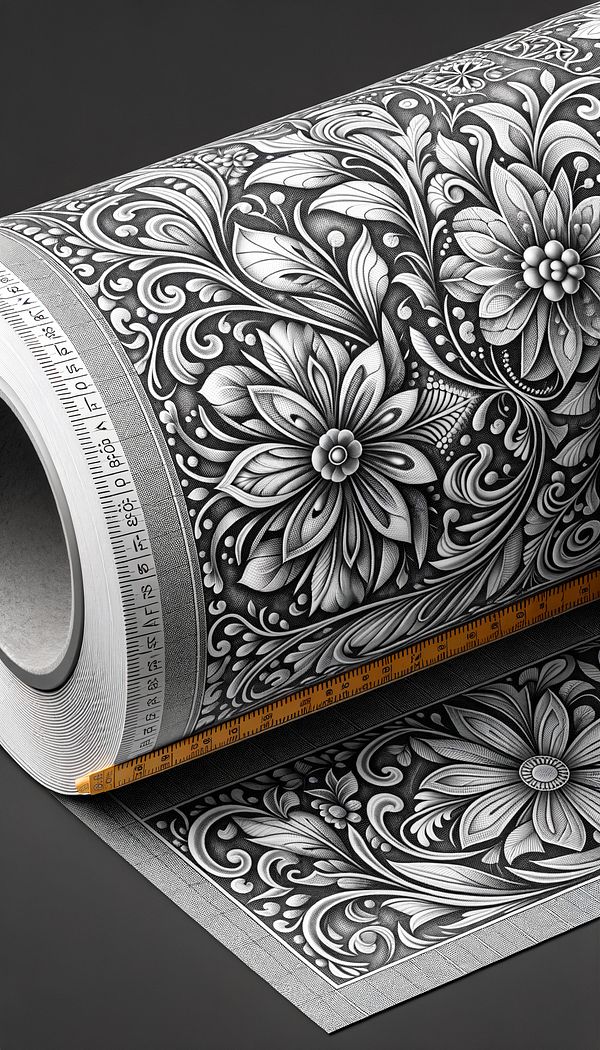What is Pattern Repeat?
Pattern repeat is the distance between one point in a design to the exact point where it starts again.
Description
Pattern repeat is a fundamental concept in interior design, particularly relevant when dealing with wallpapers, fabrics, and other patterned materials. It refers to the repeatable segment of the pattern, which is designed to be seamlessly replicated both horizontally and vertically across a surface, ensuring a continuous pattern flow. Understanding pattern repeat is crucial for designers and decorators to avoid unwanted breaks and to ensure patterns match at seams when applying them to walls, furniture, or decor items.
The size of the pattern repeat can significantly influence the look and feel of a space. Smaller repeats tend to create more visual texture and can be easier to match, whereas larger repeats may become focal points and lend a more dramatic effect. However, larger repeats can lead to more wastage during installation, as it's essential to align the pattern at seams, requiring precise cutting and planning.
For practical applications, knowing the pattern repeat assists in calculating the amount of material needed for a project and planning the layout to achieve the best aesthetic and least wastage.
Usage
Pattern repeat is most commonly encountered when selecting textiles for upholstered furniture, curtains, or when choosing wallpapers. For instance, when purchasing wallpaper, knowing the pattern repeat helps to calculate how many rolls are needed to cover a room without breaking the pattern continuity. In upholstery, understanding pattern repeat is crucial to ensure that the pattern aligns properly on cushions, chairs, and sofas.
FAQs
-
Why is it important to consider pattern repeat in interior design?
Considering pattern repeat is important to ensure continuity, coherence, and the efficient use of resources in a design. It helps to avoid breaks in the pattern, which can disrupt the flow and aesthetic of a space, and ensures that the pattern matches perfectly at seams, enhancing the overall look of the room.
-
How can you measure the pattern repeat?
The pattern repeat can be measured by identifying the vertical and horizontal distance between the starting point of a design element and the point where the same element starts again. This measurement is typically provided by the manufacturer on the product's packaging or specifications sheet.
-
Does a larger pattern repeat lead to more wastage?
Yes, a larger pattern repeat often leads to more wastage since aligning the pattern at seams requires more material to ensure the design matches correctly. It's important to account for the pattern repeat when purchasing material to minimize waste and additional costs.
Practical Application
When planning to incorporate patterned materials in your design, always check the pattern repeat information. Begin by measuring your space and comparing it to the pattern repeat size to calculate how much material you'll need. For wallpaper or fabric with a significant pattern repeat, consider ordering extra to accommodate matching at the seams. Additionally, think about the visual impact of the repeat size – whether you prefer a subtle texture or a bold statement piece, the pattern repeat can help you make that decision.
-
Decorating Principles & Elements330 articles
-
Color & Patterns154 articles
-
Textiles & Upholstery252 articles
-
Wall Treatments & Finishes157 articles
-
VintageVintage refers to items, especially furniture and decor, from a previous era that have a sense of history and timeless appeal.
-
DecalA decal is a design prepared on a special paper for durable transfer on to another surface such as glass, metal, or ceramic.
-
Iron BedAn iron bed is a bed frame made primarily out of iron.
-
ArabesqueAn intricate pattern of interlaced lines, often incorporating floral and geometric motifs.
-
Overstuffed FurnitureOverstuffed furniture is a type of plush, heavily padded furniture.
